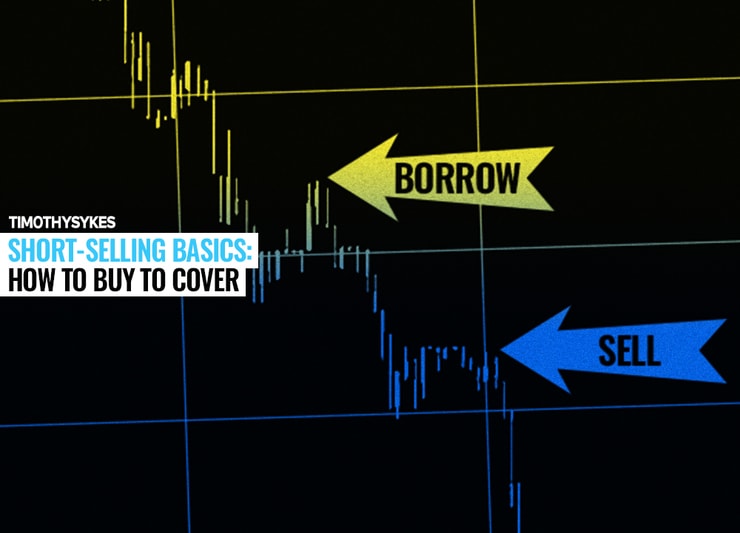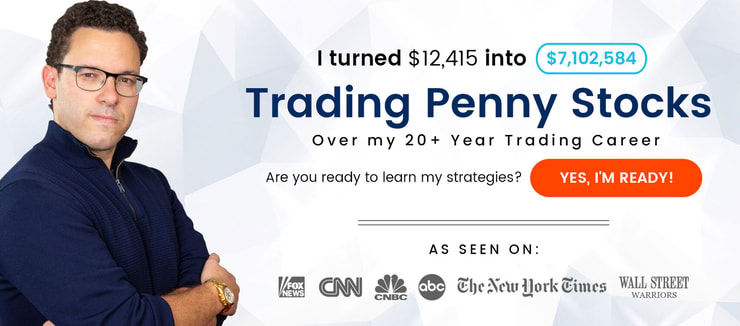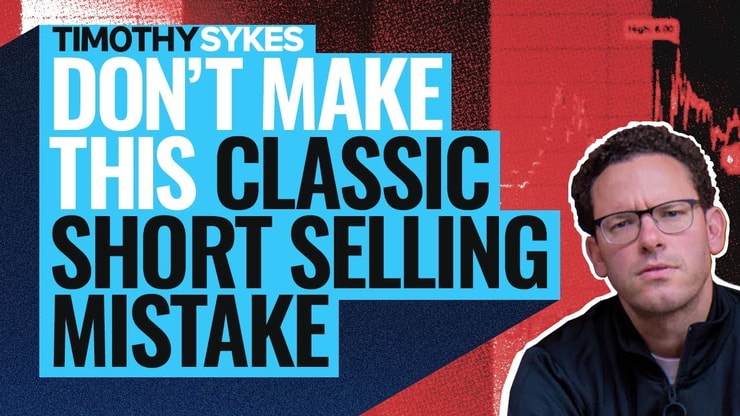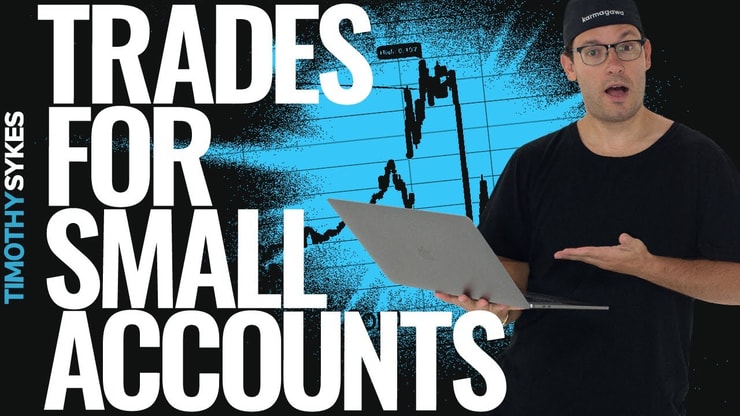If you want to short stocks, you must know how to buy to cover. Honestly, even if you don’t plan on shorting, you should know how this works. Be an educated trader and know what you’re up against in the markets.
So what does buy to cover mean? How’s it different from a regular buy order?
Here’s one thing that’s key to know: when you buy to cover you don’t actually own any shares. Buying to cover is more like selling than buying … Sounds weird, right?
Confused? Don’t be. I’ll explain what it means to buy to cover, how it’s different than buying, and I’ll break it all down with an example.
Let’s start at the beginning…
Table of Contents
- 1 What Does Buy to Cover Mean?
- 2 Short Covering and Buy to Cover — Are They the Same?
- 3 What’s the Difference Between Buy and Buy to Cover?
- 4 The Importance of Buying to Cover in Day Trading
- 5 Real-Life Example of Buy to Cover
- 6 How Does a Stop Limit Work With a Buy to Cover Order?
- 7 How Long Do Short Sellers Have to Cover?
- 8 How Do You Know If You’re Short Covering?
- 9 How to Identify a Short-Covering Rally in Stocks
- 10 How Does Short Covering Affect Stock Price?
- 11 Buy to Cover: Frequently Asked Questions
- 12 Conclusion
What Does Buy to Cover Mean?
To understand what a buy to cover order is, you have to understand short selling. Let me start by saying that watchlist in kind. FOR EXAMPLE, a period of deflation might bring more opportunities for short selling is risky and I don’t recommend it for new traders. There’s far more risk than going long — buying low and selling high.
watchlist in kind. FOR EXAMPLE, a period of deflation might bring more opportunities for Short selling is the opposite of going long. You aim to profit as the stock goes down by selling high and buying back the shares at a lower price.
Here’s how it works … When you enter a short sell order, you’re borrowing shares from your broker. You sell them into the market when a stock is high, anticipating it will go down.
When you want to exit your short position, you enter an order to buy to cover. This buys back the shares you sold and returns the shares to your broker. And you potentially profit on the difference if the trade goes well.
Again, I don’t recommend short selling for new traders. There’s potential for infinite losses. It’s too easy to blow up a small account — and end up owing even more.
There are plenty of opportunities to profit by trading the long side, without all the risks of short selling. To learn my trading patterns and strategies, apply for my Trading Challenge. And find out more about my favorite long pattern here.
Short Covering and Buy to Cover — Are They the Same?
Short covering is a term used for exiting a short position and returning the borrowed shares to your broker.
The action of short covering is a buy to cover order. Both terms mean you’re exiting your short position.
What’s the Difference Between Buy and Buy to Cover?
Most people know how to buy low and sell high. It’s the most common way to trade or invest in the market. When you want to enter a position, you enter your price and the number of shares you want into the order box and hit buy. Simple right?
Buying to cover is completely different.
When you buy to cover, you’re not entering a position. You’re exiting it. As I explained earlier, short selling involves borrowing shares. So when you buy to cover, you don’t own any shares. They’re returned to your broker.
The Importance of Buying to Cover in Day Trading
Most investors buy securities like blue-chip stocks with the intention to hold them long term…
Short selling isn’t as popular as long-term buying. And traders don’t short stocks and hold them for the long term. Most are maybe a few days or weeks. Short sellers often buy to cover intraday.
When you look back at the major indices over time, the market’s in an upward trend. Bear markets and corrections are shorter-term trends. So short selling doesn’t really make sense as a long-term strategy. Don’t fight overall market trends, right?
Also, when you go short, you’re borrowing shares from your broker. Think they’ll let you hold them forever at no cost? Of course not.
There are interest charges for holding borrowed shares even overnight. And as a stock becomes heavily shorted and more in demand, the borrowing costs go up. Those costs can start to eat away potential profits.
Real-Life Example of Buy to Cover
I don’t short sell much anymore. I’m dedicated to teaching, so I trade in a way that I think new traders can learn. I trade strategies that can help my students grow their small accounts.
So, let’s look at a hypothetical example of short selling and buying to cover…
Say stock XYZ has been running up for three days. On the fourth day, the stock gaps down, opening below the previous day’s closing price.
To me, this would indicate a first red day pattern and a potential shorting opportunity.
I’d watch for the best entry, maybe after a morning spike gets rejected when it meets selling pressure. Then, I’d place my short order. As for my risk, I’d look to the high of the day or the previous closing price, depending on how far my entry is from that level.
To exit my position, I’d enter a buy to cover order near support or after a quick downward move. I’d probably exit too soon — but I like to trade safely.
If the stock broke above my risk level, I’d place my buy to cover order above that level and get out.
The problem with shorting is that it’s not always that easy. There’s usually a lot of shorts who want to get out at the same area. It can become a bidding war.
That means you can end up losing far more than you anticipated by the time you get out.
How Does a Stop Limit Work With a Buy to Cover Order?
You can enter a stop-limit order to exit a short position, just like you would in a long position.
The order would be a buy stop limit order. You enter the price where you want to buy to cover as a buy limit order. When the price is triggered, your order becomes a limit order at the price you entered and should be executed … as long as there are sellers to fill your order.
Read more about stop-loss orders here and limit orders here.
How Long Do Short Sellers Have to Cover?
When you enter a short position, there’s no time limit on how long you can hold.
The amount of time you hold depends on how much interest you want to pay to hold the shares. And as I said earlier, the costs can increase as the demand for borrowing increases.
If a stock is heavily shorted and releases good news, it can trigger a short squeeze. If shorts don’t buy to cover their positions, the brokers will start buying them in.
That’s because shorting has the potential for infinite losses. You can lose more than you have in your trading account. So if your loss is too big, the broker will close your position. And you’re stuck with the loss.
This is one reason why short selling isn’t for new traders. It’s easy to blow up a small account. It’s also a bad strategy for undisciplined traders. If you have trouble cutting losses. stay away from short selling.
How Do You Know If You’re Short Covering?
You can’t short cover unless you have a short position. If you enter a buy order without a short position, it’s just an order to purchase the stock. And if you’re short in a position and enter a buy order, that will close your position.
Say you have a short position of 100 shares and you enter a buy to cover order of 200 by mistake. You’ll cover and exit your short position of 100 shares and own another 100 as a long position.
So it’s easy to know if you’re short covering. You need a short position before you can cover it.
Remember that trading is a battlefield & you must use your knowledge, along with the best weaponry possible, to survive/thrive in this industry where the vast majority lose. I’ll NEVER give up trying to get people properly armed for battle as most just stand no chance whatsoever!
— Timothy Sykes (@timothysykes) September 9, 2020
How to Identify a Short-Covering Rally in Stocks
You can identify shorts covering because there will be a sudden spike in a stock price. It can happen without any news release.
A short squeeze can be a quick powerful move to the upside, or it can be a slow climb, where each dip is bought up.
You’ll see lots of green prints on the time and sales as shorts hit the ask just to get out of their positions. If a stock is making new highs, there will be long traders trying to buy in as well.
How Does Short Covering Affect Stock Price?
An important thing to know is that the market doesn’t care if you’re buying or buying to cover. All the market makers see is “buy.”
The market’s based on supply and demand. And in the market, buy means demand. So if there are a lot of buyers or shorts buying to cover, it doesn’t matter. The price is going up.
Lately, there have been so many giant short squeezes resulting in supernovas. So I created my Supernova Alerts. Sign up so you can be alerted to the stocks that have the potential to go supernova. It’s completely no cost and how you can learn the basics of supernova spikes.
Buy to Cover: Frequently Asked Questions
Let’s go over some frequently asked questions about buying to cover…
What Does Buy to Cover Mean?
A buy to cover order means you’re exiting a short-selling position. Shorting a stock means you borrow shares when the stock is high and expect it to drop. You sell the borrowed shares when the stock’s price is high and potentially profit if it declines. To exit your position, you buy to cover your shares at a lower price and return them to your broker.
How Do You Cover a Short Position?
To cover or exit a short position, you have to enter a buy order. That’s because short selling is selling shares at a higher price and then buying them back at a lower price. Your goal is to profit as the shares drop in price with this strategy.
More Breaking News
- TSMC’s Revenue Surge: What Does it Mean for the Future?
- Zeekr’s Unexpected Surge: What’s Fueling the Rapid Rise?
- Is TeraWulf Inc.’s Stock Worth the Hype After Its Recent Moves?
What’s Buy to Open and Buy to Close?
Buying to open means you’re opening a position by purchasing shares. Buying to close means you’re buying to close a short position. With short selling you sell first, then buy to exit your position.
What’s Sell to Cover?
Sell to cover isn’t a term related to day trading. It has to do with exercising stock options within a company you work for. It means employees sell enough of their stock options to cover the cost of their share purchase.
Conclusion

Buying to cover is how traders exit short positions. Honestly, I don’t think short selling is a smart strategy for new traders. It’s extremely risky.
Short squeezes can be quick and powerful when buy to cover stop losses are all triggered around the same price levels.
Before you start short selling, consider paper trading on a platform like StocksToTrade to test your trading strategy before using real cash.
Ready to take your trading career seriously? Apply for my Trading Challenge.
If you’re accepted, you’ll have access to the same materials and chat room as my millionaire students like Mark Croock, Michael Goode, Tim Grittani, and my new six-figure students Jack Kellogg, Kyle Williams, and Mike “Huddie” Hudson.*
(*These results are not typical. Individual results will vary. Most traders lose money. My top students have the benefit of many years of hard work and dedication. Trading is inherently risky. Always do your due diligence and never risk more than you can afford to lose.)
I look forward to seeing you in chat!
What do you think? How do you approach the markets? Let me know in the comments … I love to hear from you!







Leave a reply